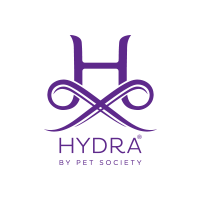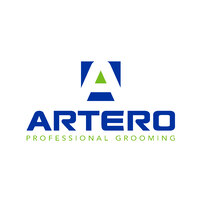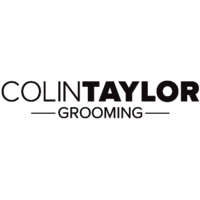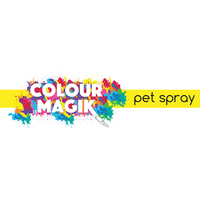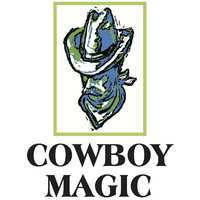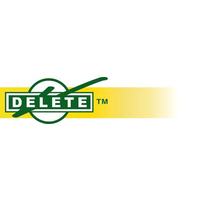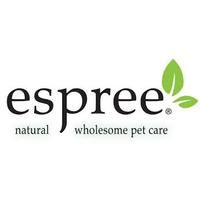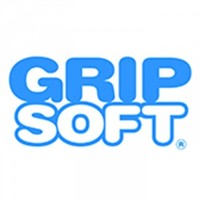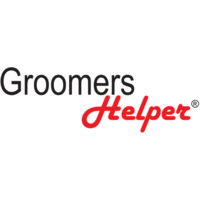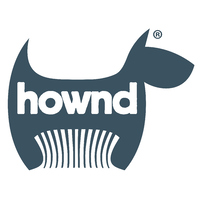What Not to Do When Grooming Your Dog? - Zack Keithy
Author: Zack Keithy Date Posted:12 September 2023
What Not to Do When Grooming Your Dog?
Are you ready to dive into the wild world of dog grooming?
You might be wondering, "Why is grooming so important for my furry friend's health and well-being?"
Well, hold on to your grooming brushes because I'm about to unleash some knowledge!
Let's get one thing straight: grooming isn't just about making your dog look like a canine supermodel (although they do have the looks for it, don't they?). It's about so much more!
Proper grooming plays a vital role in maintaining your dog's overall health and well-being.
Just like how we humans feel our best after a refreshing shower and a good hair day, dogs also benefit from regular grooming sessions.
Whether you're a proud pet parent who wants to take their grooming game to the next level or a professional groomer looking to brush up on your skills (pun intended), this guide will show you what not to do when grooming your dog so you don’t mess up!
Understanding the Basics of Dog Grooming
Dog grooming is like giving your pup a spa day, but without the fancy robes and cucumber slices for their eyes.
It involves a range of activities aimed at keeping your dog clean, comfortable, and looking their best.
Now, I know what you're thinking: "What are the objectives of dog grooming? Is it just about making my pup fancy?" Well, not exactly.
The objectives of grooming go beyond aesthetics.
It's all about maintaining your dog's hygiene, preventing health issues, and ensuring their overall well-being.
By grooming your furry friend regularly, you can keep their coat healthy, reduce shedding, prevent matting and skin irritations, and even catch early signs of potential health problems.
So, think of grooming as a way to pamper your pup while also being their very own doggy detective, sniffing out any issues that may arise.
Importance of Safety and Gentle Handling During Grooming
Before we dive headfirst into the nitty-gritty of grooming, let's take a moment to address an essential aspect—safety and gentle handling.
Picture this: you're trying to groom your pup, but they're squirming like a hyperactive squirrel on a caffeine rush. Trust me, we've all been there.
Gentle handling is key when it comes to grooming.
Dogs, just like us, have their own comfort zones and boundaries.
Remember, your goal is to create a positive and stress-free grooming experience for your furry friend.
To make grooming a walk in the dog park, keep these tips in mind.
- First, create a safe and comfortable grooming environment. Use non-slip mats in the bathing area, secure your pup on a grooming table or surface, and have all your tools within reach. This way, you can avoid any unexpected slip-ups or impromptu bathroom break escapes.
- Second, introduce grooming gradually and positively. Start by acclimating your dog to the grooming tools and process in small steps. Offer treats, praise, and rewards to create a positive association. This will make future grooming sessions a breeze (well, maybe a gentle breeze).
- Lastly, pay attention to your dog's body language. They can't talk, but their subtle cues can speak volumes. Watch for signs of discomfort, such as growling, lip licking, or pulling away. If your dog is showing signs of distress, take a step back, reassess the situation, and consider seeking professional guidance.
Common Mistakes to Avoid When Grooming Your Dog
The moment of truth has arrived! It's time to delve into the murky waters of common grooming mistakes that even the most well-intentioned dog owners can stumble upon.
So, hold on to your grooming brushes tightly, my fellow grooming enthusiasts, as we uncover the first common blunder:
1. Skipping the Pre-Grooming Preparation
Imagine this scenario: you're standing in front of your dog, shampoo in one hand, and a glimmer of hope in your eyes.
You're ready to conquer bath time like a seasoned professional.
But wait! There's an essential step you might be tempted to skip—pre-grooming preparation.
Why is pre-grooming preparation so important, you ask?
Well, imagine jumping into a swimming pool without removing your clothes first.
It's a tangled mess waiting to happen, my friends.
Similarly, brushing and detangling your dog's fur before bath time is an absolute must.
By brushing your furry friend's coat before the bathing extravaganza, you're setting yourself up for success.
It helps remove loose hair, prevents matting, and ensures that the shampoo can penetrate evenly to get to the root of cleanliness.
Skipping this step can result in tangled fur, discomfort for your dog, and a potentially disastrous grooming experience.
2. Using the Wrong Tools or Products
The allure of shiny, new grooming tools and products on the market can certainly beckon to you like a siren, promising magical results and a doggy makeover like no other.
But hold your clippers and put down that fancy-smelling shampoo!
Choosing the wrong tools or products can lead you down a treacherous path.
Just like we humans have our unique hair types and preferences, our furry friends come in all sorts of coat varieties.
From luscious long hair to short and sleek fur, each coat type requires specific grooming tools.
Before you embark on your grooming journey, take a moment to assess your dog's coat type.
Are they blessed with a majestic mane that requires regular brushing?
Or perhaps they sport a short coat that needs minimal maintenance?
Once you've identified their coat type, choose the appropriate grooming tools accordingly.
- For long-haired pups, invest in a high-quality slicker brush or comb to gently remove tangles and prevent matting.
- Short-haired dogs might benefit from a grooming glove or a rubber curry brush to keep their coats shiny and smooth.
The right tools can make a world of difference, ensuring that your grooming sessions are efficient and comfortable for your dog.
Next, you would also want to avoid using human products for your pooch.
To keep your dog's skin and coat in tip-top shape, invest in dog-specific shampoos and conditioners.
These products are specially formulated to suit their unique needs, leaving them smelling fresh and their fur feeling soft and healthy.
Lastly, you want to make sure to read the labels and opt for those that are free from harsh chemicals, sulfates, and artificial fragrances.
Look for natural or organic options that prioritize your pup's well-being.
3. Improper Bathing Techniques
Some dogs love it, while others look at you with eyes that say, "Please, spare me this soggy torture!"
But fear not! By avoiding a few common bathing blunders, you can turn bath time into a splashing success.
- Ensuring the water temperature is suitable for the dog: We've all experienced the shock of stepping into an icy cold shower or accidentally scalding ourselves with hot water. Well, guess what? Our furry friends can feel the same way! When it comes to bathing your dog, getting the water temperature right is crucial for a comfortable and enjoyable experience. Before you unleash the waterworks, test the water with your own hand. Aim for lukewarm water, not too hot and definitely not icy cold. If they seem tense, shivering, or trying to escape the tub like a Houdini, it might be a sign that the water temperature needs adjustment.
- Using dog-specific shampoos and conditioners: Human shampoos and conditioners might leave our hair smelling like a tropical paradise, but they can wreak havoc on our furry friends' sensitive skin. Opt for dog-specific shampoos and conditioners that are specially designed to suit their unique needs. These products are gentle, free from harsh chemicals, and can help maintain a healthy balance of oils in your pup's coat.
- Properly rinsing out all the products to avoid residue: Imagine stepping out of the shower with soap suds still clinging to your skin, leaving a sticky, uncomfortable film behind. Not a pleasant thought, right? Well, the same goes for our furry friends. Properly rinsing out all the shampoo and conditioner residue is essential for their comfort and well-being. Use your hands or a handheld showerhead to ensure that no residue is left behind. Remember, leaving shampoo or conditioner on your dog's skin can cause irritation, dryness, and itchiness—definitely not the outcome we're aiming for!
4. Incorrect Nail Trimming
It's a task that can strike fear into the hearts of both dogs and their humans, but I’m sure the tips below will help you out.
- First things first, gather the necessary tools. Invest in a high-quality pair of dog nail clippers or a dog nail grinder. Make sure they're appropriate for your dog's size and nail thickness. Remember, dull or incorrect clippers can cause pain and injury, so choose wisely!
- Now, let's get down to business. Find a calm and quiet area where you and your pup can focus without distractions. If your dog is anxious about nail trims, try associating the experience with positive rewards like treats or praise. A little positive reinforcement goes a long way!
- Before you start trimming, take a closer look at your dog's nails. Identify the quick—the pink area inside the nail that contains blood vessels and nerves. You want to avoid cutting into the quick, as it can be painful and cause bleeding. If your dog has clear or light-colored nails, the quick might be more visible. If they have dark nails, exercise extra caution and trim smaller amounts at a time to avoid accidents.
- Hold your pup's paw gently but firmly, and start by making small, gradual cuts. Aim to trim just the curved tip of the nail, staying away from the quick. If you're using a nail grinder, use a gentle grinding motion to gradually shorten the nail.
If you're uncertain or uncomfortable with nail trimming, don't hesitate to seek professional help as this is one of the most common situations where grooming injuries happen.
Veterinarians and professional groomers have the expertise to handle nail trims with precision and care.
Your dog's safety and well-being are top priorities, so don't be afraid to ask for assistance.
5. Mishandling Ear Cleaning
Proper ear cleaning helps maintain your dog's ear health and hygiene.
It removes dirt, debris, and excess wax that can build up over time.
By keeping those ears squeaky clean, you're reducing the risk of infections, foul odors, and uncomfortable itchiness for your furry friend.
Again, I have a few suggestions on how you can do it the right way:
- First, gather your supplies. You'll need a high-quality dog ear cleaner (available at pet stores or recommended by your veterinarian) and cotton balls or gauze pads. Avoid using cotton swabs or any pointed objects, as they can damage the delicate structures inside the ear.
- Find a calm and comfortable space for the ear-cleaning extravaganza. Make sure your pup is relaxed, and have some treats at the ready for positive reinforcement.
- Hold your dog's ear gently, and apply a few drops of the ear cleaner into the ear canal. Gently massage the base of the ear for a few seconds. This helps distribute the cleaner and loosen any dirt or wax buildup. Cue the relaxation music for those happy ear massages!
- Next, grab a cotton ball or gauze pad and gently wipe the inside of the ear, focusing on the areas you can see. Be careful not to push the cotton ball too far into the ear canal to avoid injury. Remember, we're aiming for gentle, not exploratory spelunking!
If you notice any redness, swelling, discharge, or a foul odor during the cleaning process, stop and consult your veterinarian.
These may be signs of an underlying ear infection or other ear-related issues that require professional attention.
6. Overlooking Dental Care
It's an area that often gets overlooked, leaving our furry friends with less-than-stellar breath and potential dental issues.
Proper dental care helps prevent dental diseases, such as gum inflammation, tooth decay, and periodontal disease.
It keeps those pearly whites shining and reduces the risk of oral discomfort, bad breath, and even potential health issues in other parts of the body.
Here’s what you should do on a regular basis:
- Start by incorporating regular tooth brushing into your dog's routine. Use a dog-specific toothbrush and toothpaste (never human toothpaste!) and introduce it gradually. Begin with gentle, short brushing sessions and gradually increase the duration over time.
- If your dog is resistant to tooth brushing, don’t worry! There are alternatives to keep those chompers clean. Dental treats, chews, and toys designed to promote oral health can help remove plaque and tartar buildup.
- Watch out for signs of dental issues, such as bad breath, swollen gums, excessive drooling, or difficulty eating. If you notice any of these signs, consult your veterinarian. They can perform a dental examination and, if necessary, a professional dental cleaning to keep your pup's oral health in tip-top shape.
Final Comments
As you can see, proper grooming practices are vital for the health and well-being of our beloved canine companions.
By avoiding these common grooming mistakes, we can create a positive grooming experience that keeps our furry friends happy, healthy, and looking their best.
So, grab those grooming tools, be gentle and attentive, and let the grooming adventures begin!

